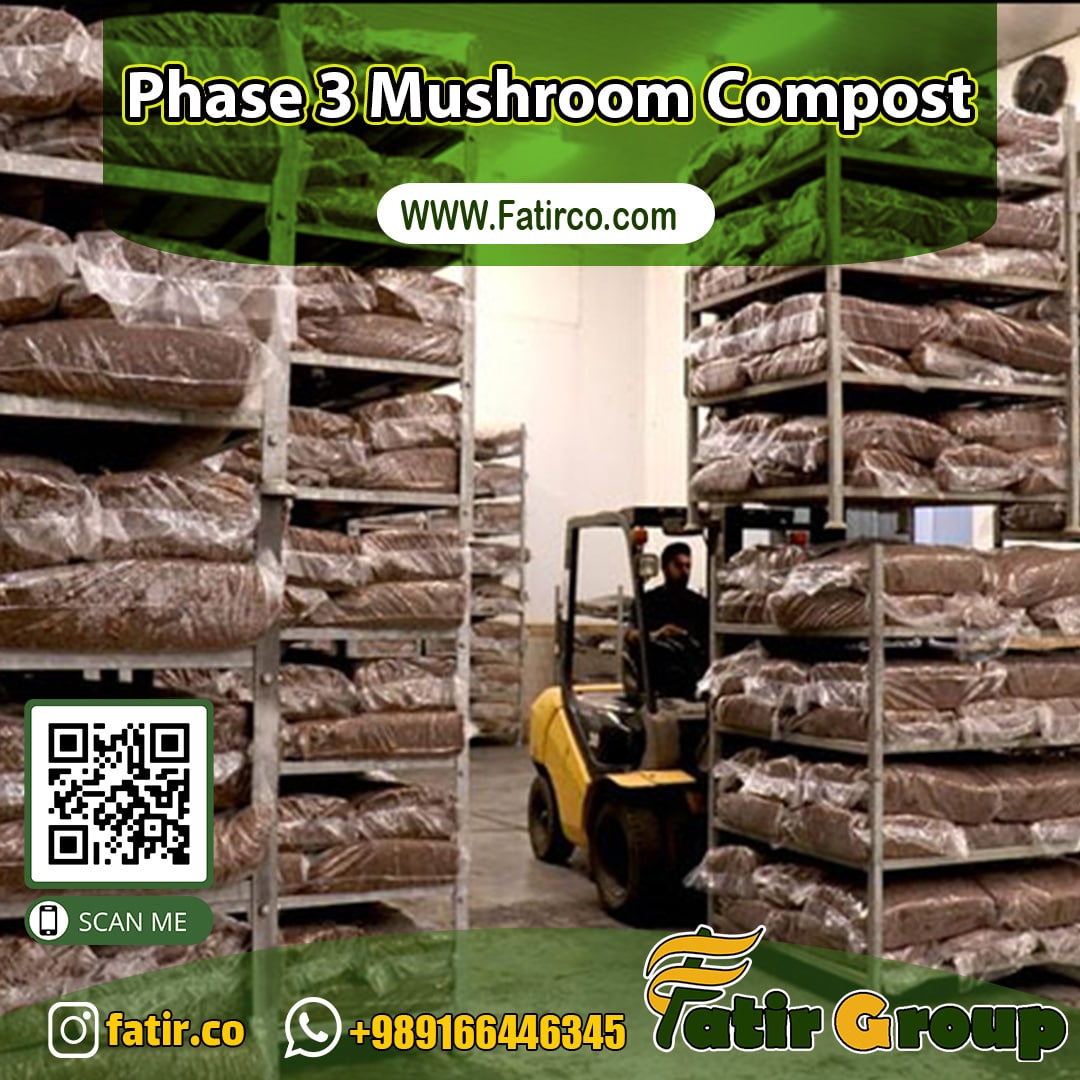No products in the cart.
Phase 3 Mushroom Compost | Fatir Group
- Products
- Phase 3 Mushroom Compost | Fatir Group
Phase 3 Mushroom Compost | Fatir Group
There are many processes involved before our mushrooms arrive on the supermarket shelves. We believe that goodness in, equals goodness out, that the mushrooms we grow are only as good as the substrate they’re grown from.
Making mushroom compost is a complex process that we’ve been perfecting for more than 10 years.
Mushroom spawn is added, and the substrate is then re-filled into Phase 3 tunnels. Spawn is usually made with rye or millet grain that has been sterilized and inoculated with mushroom tissue (mycelium). This Phase 3 incubation process takes 15-17 days, and during this time mycelium grows throughout the substrate.
Description
Phase 3 Mushroom Compost:
Mushroom spawn is added, and the substrate is then re-filled into Phase 3 tunnels. Spawn is usually made with rye or millet grain that has been sterilized and inoculated with mushroom tissue (mycelium). This Phase 3 incubation process takes 15-17 days, and during this time mycelium grows throughout the substrate. finally Phase 3 Mushroom Compost is ready to be used.

There are 4 main phases for making compost:
Phase 1
We source all the raw materials for substrate, locally. Bales of straw are mixed with poultry manure,
horse manure, water and gypsum. When mixed, the material is filled into large aerated concrete
vessels, called bunkers. During this phase the substrate reaches temperatures of 80 degrees
Celsius.
After 11 – 13 days the Phase 1 process is complete, ready for the Phase 2 process to begin.
Phase 2
The material is removed from the bunkers and filled into closed tunnels, where we monitor
and control a series of temperature changes- the most important of which is pasteurisation.
Pasteurisation helps remove any unwanted organisms from the substrate.
Pasteurisation and conditioning of the substrate takes approximately 6 days. The climate
controlled “tunnel” heats the substrate to 58 degrees Celsius for pasteurisation and then
conditions it at 48 degrees Celsius.
Phase 3
Once the phase 2 process is complete, the substrate is cooled and removed from the Phase 2
tunnels. Mushroom spawn is added, and the substrate is then re-filled into Phase 3 tunnels.
Spawn is usually made with rye or millet grain that has been sterilized and inoculated with
mushroom tissue (mycelium). This Phase 3 incubation process takes 15-17 days, and during
this time mycelium grows throughout the substrate.
After the 15-17 day incubation period, the Phase 3 substrate is loaded into specially designed
lorries for transport to the growing houses.
As well as using the substrate for our own farms, we sell phase 2 and 3 substrate to other growers.
Phase 4
As the mushroom substrate is filled into the growing rooms a layer of peat is applied to the
surface of the material. The layer is called the casing layer and is essential for the formation of
zthe mushrooms. Over a 3-4 day period, the mushroom tissue grows throughout the substrate
and up through the casing layer.
The environment is then altered to simulate an autumn day, which promotes the formation of
mushrooms. As a result, tiny mushroom heads (pins) begin to appear. During the next two weeks
the levels of moisture, temperature, humidity, carbon dioxide and air movement are carefully
monitored.

Be the first to review “Phase 3 Mushroom Compost | Fatir Group” Cancel reply


Reviews
There are no reviews yet.